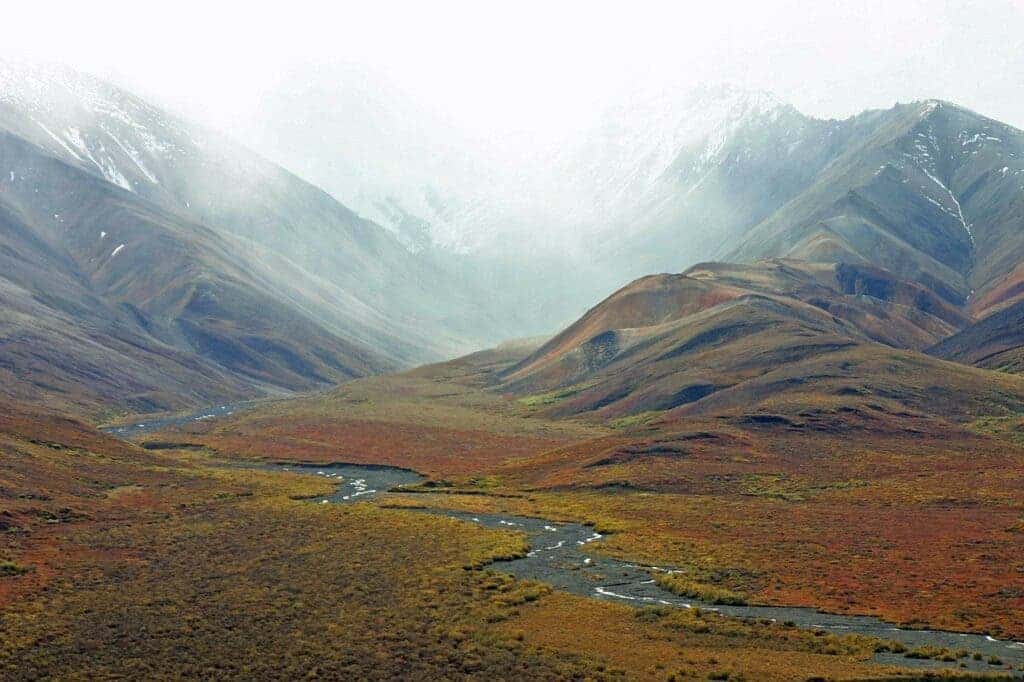Siberian tundras will disappear completely if greenhouse gas emissions aren’t meaningfully reduced.

As temperatures keep rising around the world due to global warming, landscapes are shifting accordingly. In the Arctic, treelines are advancing northwards as these higher temperatures make more areas available for them to inhabit. As a consequence, the tundras that characterize sub-arctic locations such as Siberia and parts of North America are increasingly being pushed aside.
If greenhouse gas emissions aren’t reduced significantly, a new paper explains, Siberia’s tundra will disappear entirely by the middle of the millennium.
Receding tundralines
“For the Arctic Ocean and the sea ice, the current and future warming will have serious consequences,” says Prof Ulrike Herzschuh, Head of the Polar Terrestrial Environmental Systems Division at the Alfred Wegener Institute, Helmholtz Centre for Polar and Marine Research (AWI), and co-author of the paper.
“But the environment on land will also change drastically. The broad expanses of tundra in Siberia and North America will be massively reduced, as the treeline, which is already slowly changing, rapidly advances northward in the near future. In the worst-case scenario, there will be virtually no tundra left by the middle of the millennium.”
Both average and maximum temperatures in the Arctic are climbing rapidly due to the changes in climate caused by man-made emissions. In the High North — territories throughout the Arctic beyond the Polar Circle — average temperatures have risen by more than 2 degrees Celsius over the last 50 years, far more than the mean figure for the Earth as a whole. Unless man-made emissions of greenhouse gases drop significantly, this trend will continue far into the future.
The Siberian tundra is an ecosystem that harbors an unique mix of flora and fauna, roughly five percent of which are endemic. Typical species include the mountain avens, Arctic poppy, willows, and birches, alongside animal species like reindeer, lemmings, and insects like the Arctic bumblebee. These ecosystems are under pressure from climate changes as higher temperatures allow other types of landscapes — most notably larch forests — to encroach on their ranges.
The duo of researchers from the Alfred Wegener Institute used computer simulations to map out how the spread of these forests could evolve in the future. According to the findings, only sustained, high-impact climate protection measures can give the tundra some measure of relief: such efforts would allow around 30% of today’s tundra surface to be preserved to the middle of the millennium. In all other scenarios the team simulated, this ecosystem disappeared in its entirety.
“In the course of our study, we simulated this process for the tundra in northeast Russia,” Prof Ulrike adds. “The central question that concerned us was: which emissions path does humanity have to follow in order to preserve the tundra as a refuge for flora and fauna, as well its role for the cultures of indigenous peoples and their traditional ties to the environment?”
The team reports that if ambitious greenhouse-gas reduction measures are taken, corresponding to the UN’s Emissions Scenario RCP 2.6, further warming in the Arctic could be limited to roughly 2 degrees Celsius by the end of 2100. However, if emissions remain high, corresponding to the UN’s Scenario RCP 8.5, we could see increases in summer Arctic temperatures of up to a stunning 14 degrees Celsius by the same year.
Under such conditions, larch forests could spread northward into the tundra at a rate of around 30 kilometers per decade. This would cause the tundra — which cannot itself shift to colder regions as it is blocked to the north by the Arctic Ocean — to gradually reduce in size and, eventually, disappear completely. The forest’s advance would initially lag behind the areas seeing increased warming, they add, as trees aren’t mobile and their seeds can only spread over a limited radius. However, over time, larch forests would spread throughout the region where temperatures would allow these trees to develop.
Most scenarios that the team simulated resulted in under 6% of today’s tundras surviving to the middle of the millennium. These regions were spread in two patches spread 2,500 kilometers apart: one on the Taimyr Peninsula in western Siberia, and the other on the Chukotka Peninsula, in the east. Today, the team explains, the Siberian tundra forms an unbroken, 4,000-kilometer-long belt.
Furthermore, the team explains that even if temperatures were to cool down again in the second half of the millennium, the larch forests would not completely recede from the former tundra areas.
The findings raise a worrisome alarm in regards to the health and future prospects of the Siberian tundra. Even under a best-case scenario, this ecosystem will see a massive reduction in size, and will very likely experience species fragmentation into two discrete refuges. Such fragmentation would significantly impact these unique species’ likelihood of survival.
Even if this scenario is less than ideal, not doing anything will be much worse. A business as usual approach would see the Siberian tundra gradually disappear until nothing is left.
These findings add to the growing body of evidence highlighting what is at stake if greenhouse gas emissions aren’t curtailed rapidly.
The paper “Regional opportunities for tundra conservation in the next 1000 years” has been published in the journal eLife.


